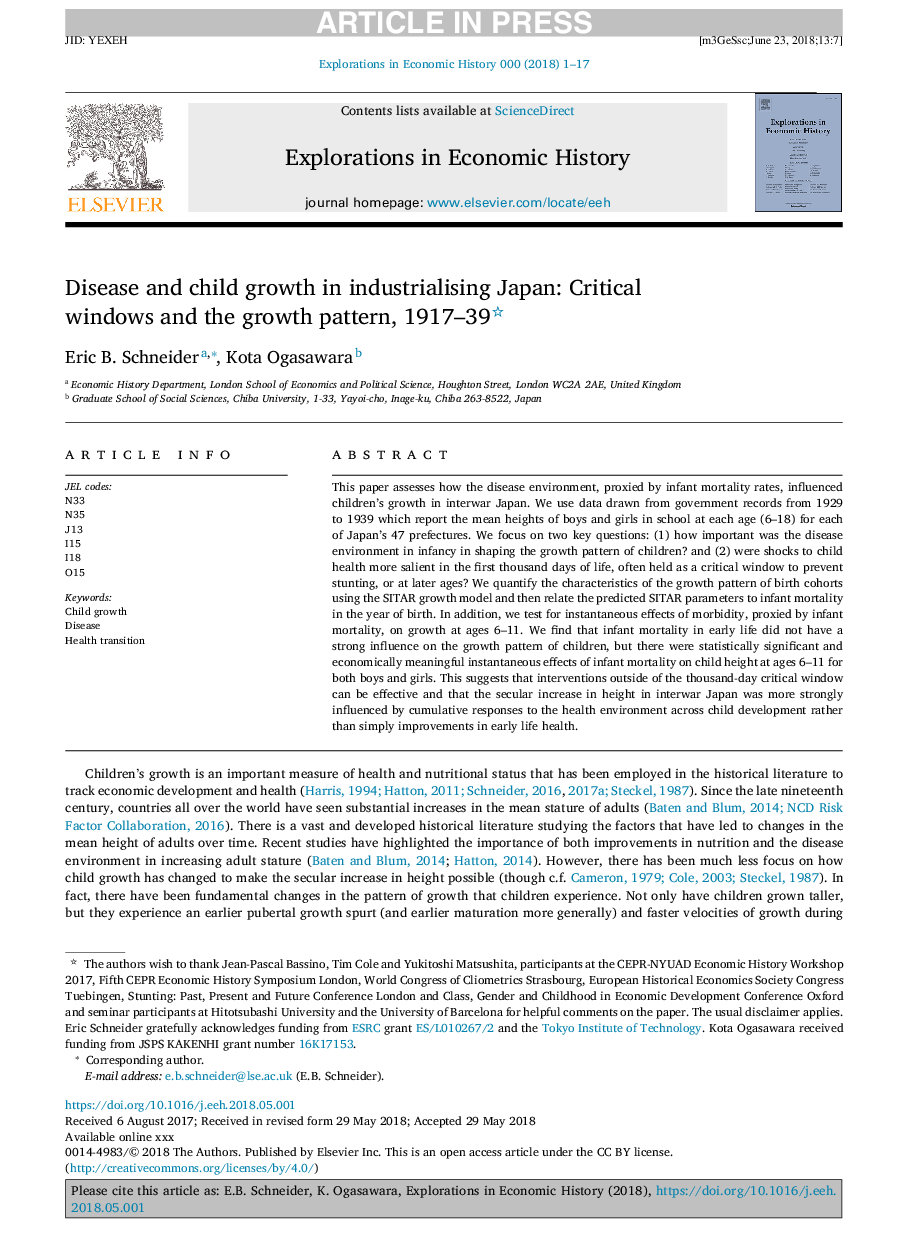| کد مقاله | کد نشریه | سال انتشار | مقاله انگلیسی | نسخه تمام متن |
|---|---|---|---|---|
| 7351861 | 1476958 | 2018 | 17 صفحه PDF | دانلود رایگان |
عنوان انگلیسی مقاله ISI
Disease and child growth in industrialising Japan: Critical windows and the growth pattern, 1917-39
ترجمه فارسی عنوان
بیماری و رشد کودک در صنعت صنعتی ژاپن: پنجره های بحرانی و الگوی رشد، 1917-39
دانلود مقاله + سفارش ترجمه
دانلود مقاله ISI انگلیسی
رایگان برای ایرانیان
کلمات کلیدی
موضوعات مرتبط
علوم انسانی و اجتماعی
علوم انسانی و هنر
تاریخ
چکیده انگلیسی
This paper assesses how the disease environment, proxied by infant mortality rates, influenced children's growth in interwar Japan. We use data drawn from government records from 1929 to 1939 which report the mean heights of boys and girls in school at each age (6-18) for each of Japan's 47 prefectures. We focus on two key questions: (1) how important was the disease environment in infancy in shaping the growth pattern of children? and (2) were shocks to child health more salient in the first thousand days of life, often held as a critical window to prevent stunting, or at later ages? We quantify the characteristics of the growth pattern of birth cohorts using the SITAR growth model and then relate the predicted SITAR parameters to infant mortality in the year of birth. In addition, we test for instantaneous effects of morbidity, proxied by infant mortality, on growth at ages 6-11. We find that infant mortality in early life did not have a strong influence on the growth pattern of children, but there were statistically significant and economically meaningful instantaneous effects of infant mortality on child height at ages 6-11 for both boys and girls. This suggests that interventions outside of the thousand-day critical window can be effective and that the secular increase in height in interwar Japan was more strongly influenced by cumulative responses to the health environment across child development rather than simply improvements in early life health.
ناشر
Database: Elsevier - ScienceDirect (ساینس دایرکت)
Journal: Explorations in Economic History - Volume 69, July 2018, Pages 64-80
Journal: Explorations in Economic History - Volume 69, July 2018, Pages 64-80
نویسندگان
Eric B. Schneider, Kota Ogasawara,
